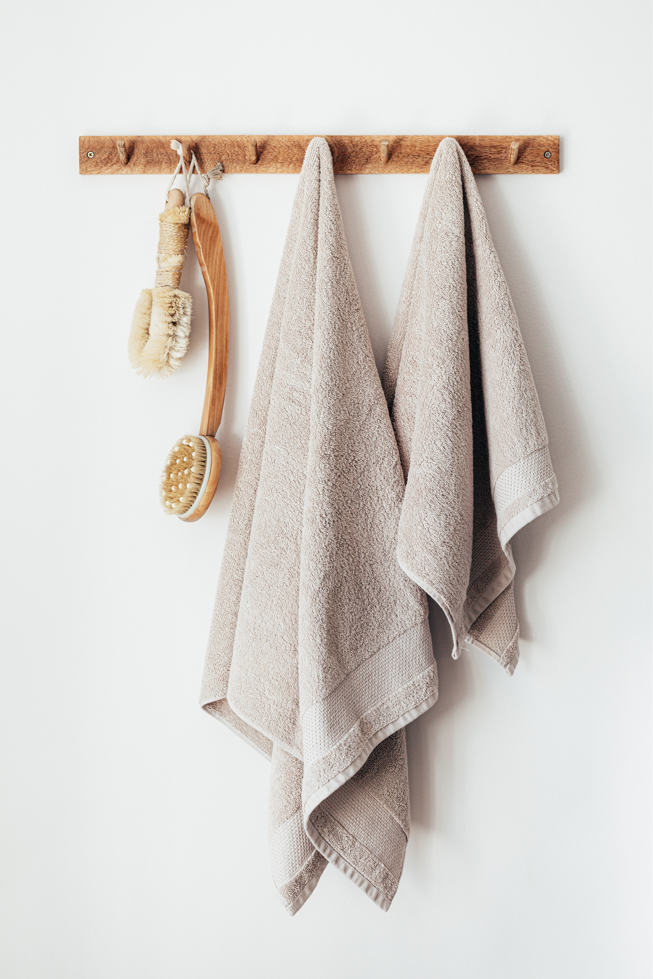How to Polish Your Beauty Routine
In general, an abrasive is something that is very hard and rough, and is used to rub or grind softer, less resistant materials, so they get smooth. One easy daily life example is, when abrasives are glued to paper, and it makes sandpaper.
Due to their characteristics, abrasives are used in a variety of applications. In the cosmetic industry abrasives, also called exfoliating agents, are often used in skin care products such as body and facial scrub, soaps, and cleansing lotions.

Images source: pexels.com
Their primary role is to sand the skin to improve skin contour by removing old layers of damaged skin and to promote skin renewal. The removal of dead skin cells and built-up dirt from the skin’s surface is called exfoliation [1]. The term comes from the Latin word exfoliare (to strip off leaves) [2]. Additionally, exfoliants are often advertised as treatments that enhance beauty and promote a youthful and healthy appearance.
For example, all toothpastes contain an abrasive. Gels usually contain silica, whereas opaque creams generally contain calcium-based abrasives, like fine ground natural chalk, dicalcium phosphate, calcium pyrophosphate and precipitated calcium carbonate [3].
Two principles can be used to achieve the abrasive effect on the skin – mechanical and chemical. Mechanical exfoliation methods involve physically scrubbing the skin with an abrasive material, whereas chemical methods utilize chemicals to remove dead skin cells from the face.

Images source: pexels.com
Mechanical exfoliation
Mechanical or physical exfoliation involves the physical removal of dead skin cells by using tools such as facial scrubs, brushes, loofahs, or washcloths. The physical action of scrubbing or rubbing helps to slough off dead skin cells from the skin’s surface [1]. This principle could also be very relaxing.
Chemical exfoliation
Chemical exfoliation involves the use of specific chemicals, such as acids, enzymes, or other exfoliating agents to dissolve or loosen the bonds between dead skin cells. This process helps to remove the outer layer of dead skin and promote cell turnover. Chemical exfoliants are available in various forms, including toners, serums, masks, or peels. They work on a cellular level and can penetrate the skin deeply [1].
Hydroxy acids are most recognizable synthetic chemical exfoliants and used for treating acne, ichthyosis, keratoses, warts, psoriasis, photo aged skin, pigmentation, wrinkles, and fine lines. α-hydroxy acids (αHAs) like glycolic, lactic, or citric acid, and β-hydroxy acid (β-HA) salicylic acid have been widely incorporated into a variety of cosmetic products for daily use over long periods of time [1, 2].
There are also some enzyme exfoliants from fruits such as papaya, pineapple, and pumpkin. They tend to be gentler than hydroxy acids and may have anti-inflammatory properties [4].
When you try to use some natural abrasives, you have a lot of options also in your kitchen. Natural exfoliants from my household?
….Yes, you are right!
Due to a rapid development of natural ingredients in various cosmetics products, nowadays several natural, herbal abrasives are well described and are already utilized, like ground shells, kernels or brans, tiny beads, crystals, granules … Some popular natural exfoliants include baking soda, coffee grounds, finely ground sugar, sea salt or almonds, cinnamon [5].
Very popular home wellness procedure we are also recommending is just mixing the coffee with coarse salt and your favourite oil. The peeling recipe is really not complicated, just feel free to explore the detailed instructions available on our DIY blog “A coffee refreshment for your skin”.
Sometimes abrasive material, natural or synthetic one, can irritate the skin because they contain rough, irregular edges. These can cause micro-scratches on the skin’s surface and increase the chances of infection and irritation.
So, remember to test any new cosmetic products or ingredients on a small area of skin before applying them to your entire face or body. This will help you ensure that your skin doesn’t react negatively to the product.
GS tip: Just to remind you, your exfoliant doesn’t have to be expensive to be effective. In fact, many natural products can act as a physical exfoliants and may be all you need for your skin.
Sources
[1] Behalade S. & Gajbhiye S. (2022): Review Article: Skin Care with Exfoliation Process. International Journal of Current Science, 12, pp. 372-379.
[2] Wikipedia: Exfoliation, https://en.wikipedia.org/wiki/Exfoliation_(cosmetology) (accessed in April 2023).
[3] European Patent Specification (2013): Toothpaste comprising calcium based abrasives: https://data.epo.org/publication-server/document?iDocId=5715717&iFormat=0.
[4] Internet source: https://www.washingtonpost.com/lifestyle/wellness/exfoliate-skin-toner-scrub-dermatology/2021/04/11/2541d818-97ce-11eb-962b-78c1d8228819_story.html (accessed in April 2023).
[5] Internet source: https://www.healthline.com/health/natural-exfoliant#natural-exfoliants (accessed in April 2023).


0 Comments